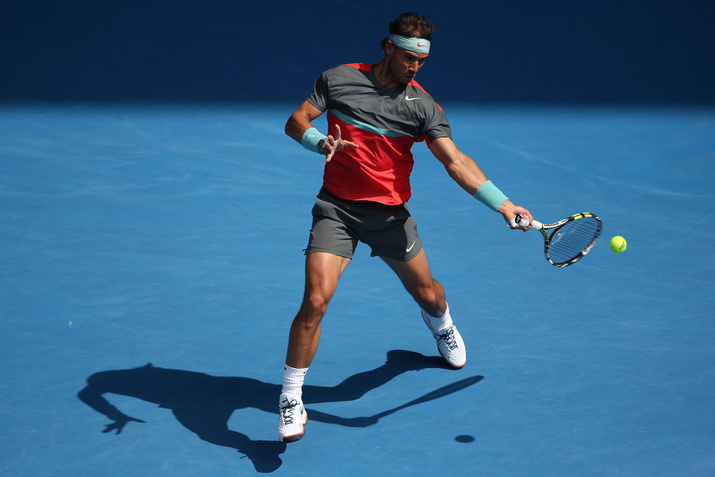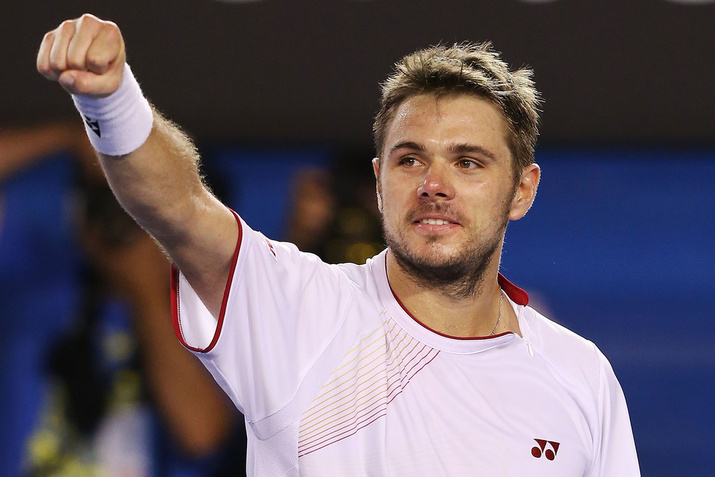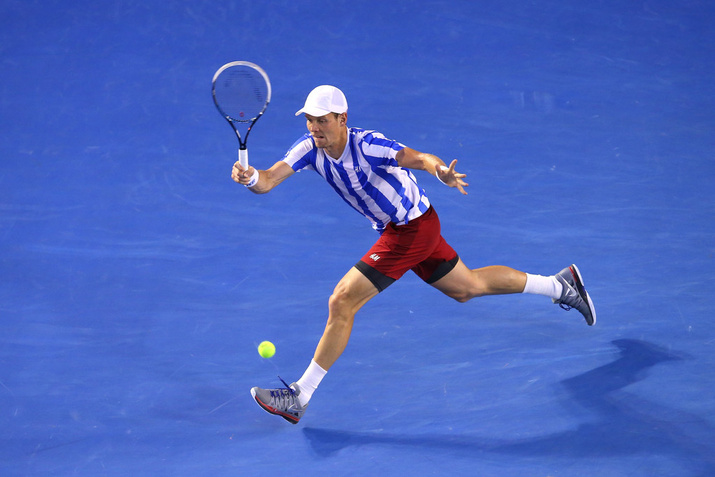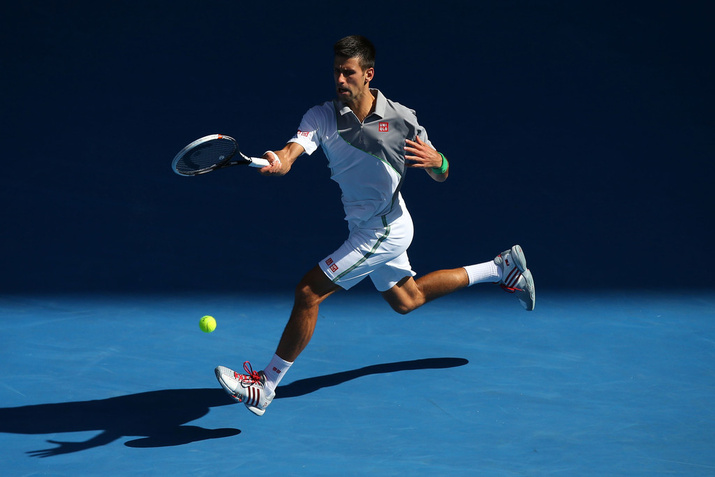Don't miss any stories → Follow Tennis View
FollowPreviewing the Indian Wells Men's Draw
With the exception of the fourth-ranked David Ferrer, all of the elite men converge on the first Masters 1000 tournament of the season in Indian Wells. The California event has featured plenty of dramatic matches, partly because of the slow hard court that allows many playing styles to shine. Another explanation for the high quality that Indian Wells produces comes from the schedule, relatively empty on the men’s side since the Australian Open. The field this year especially intrigues because no man or small group of men appears to tower above it as definitive favorites. All of the usual contenders have looked vulnerable recently for varying reasons, while some men outside that group have shown signs of reaching the next level.

First quarter: Defending champion Rafael Nadal has reached the final at all three tournaments that he has played in 2014, two of them on hard courts. Nadal also went undefeated in North America last year, a feat that few could have expected him to achieve. He holds a commanding lead at the No. 1 ranking, but the pressure will start to build from here as he defends his spectacular 2013 results. The early rounds will pit Nadal against a host of men who favor style over substance. He has defeated two of them already this year in competitive matches, halting Gael Monfils in the Doha final and Alexandr Dolgopolov in the Rio de Janeiro final on clay. Although Nadal rarely has faced Fabio Fognini, the Italian clay specialist has not hinted that he can extend his success to hard courts. Meanwhile, local fans may view with curiosity the all-American opener pitting Tim Smyczek against Jack Sock.
Not since 2011 has Nadal faced Andy Murray, whom he defeated in the Indian Wells final five years ago. Nadal has dominated this rivalry over the years, despite losses to Murray at both hard-court majors, but they have not met since the Scot redefined his career by winning his first two major titles. The task of arranging a quarterfinal clash will burden Murray more than the world No. 1. Shaky in all four of his tournaments since returning from back surgery, he has reached just one semifinal and no finals among them. Murray also shares a section with two young heavy hitters in Milos Raonic and Jerzy Janowicz, both of whom have toppled him before. The slower surface at Indian Wells might blunt their power, but John Isner rode his even rawer game to the final here in 2012. Less likely to upset Murray is Pablo Andujar, unable to take more than a set off an uninspired Scot in Acapulco.

Second quarter: What can Stanislas Wawrinka produce for an encore after winning his first major title in spectacular style? One would forgive the Australian Open champion for drifting through a hangover, and ace machine Ivo Karlovic could catch him off guard in his opener. Once past that stage, however, the path smoothens for Wawrinka. Sam Querrey has struggled to win matches against anyone lately, while Andreas Seppi has faded since his career year in 2012. A fourth-round clash between Wawrinka and Mikhail Youzhny would feature two of the ATP’s most sparkling one-handed backhands, but the slightly lower-ranked Kevin Anderson seems likely to derail that matchup. Anderson reached the final in each of his last two tournaments, losing heartbreakers both times. His potential opener against Lleyton Hewitt would pit strength against strength in towering serve against pinpoint return.
While Wawrinka now holds the Swiss No. 1 ranking, a brighter spotlight remains on the man whom he surpassed. The early stages of 2014 have revealed Roger Federer as a man on a mission to atone for 2013 disappointments. Federer has won all of his matches this year against top-10 opponents other than Rafael Nadal, defeating Novak Djokovic and Tomas Berdych to claim the ATP 500 title in Dubai. Despite the gritty court, he has won four of the last 10 Indian Wells crowns, and he still should hold a massive mental edge over Wawrinka if the two Swiss men meet in the quarterfinals. Federer’s first two matches should pose no resistance, allowing him to cruise into an intriguing encounter with Kei Nishikori. That contest should hinge on Federer’s consistency, which deserted him during a loss to Nishikori in Madrid last spring. He has looked a completely different player recently than he did then, however, so neither Nishikori nor the battered, fading Tommy Haas should detain him for long.

Third quarter: The softest section of the draw belongs to Tomas Berdych, who received a top-four seed when Ferrer withdrew. That said, Berdych has worked hard to rejoin the top five and earn opportunities like these. He has reached at least the semifinals at his last three tournaments, including an ATP 500 title, and he reached that round at Indian Wells last year. While USC star Steve Johnson produced impressive tennis in February, he has rarely encountered a player with Berdych’s weight of shot. A rematch of a recent thriller in Acapulco should decide the Czech’s fourth-round opponent, either Australian Open quarterfinalist Grigor Dimitrov or the mercurial Ernests Gulbis. Berdych probably would prefer to face Gulbis, for he has dominated him on hard courts but lost both of his meetings with Dimitrov. The Bulgarian also rides a wave of momentum from his first ATP 500 title in Acapulco.
Eighth seed Richard Gasquet holds a slight edge over Berdych in their previous meetings, which might suggest a semifinal run if not for the Frenchman’s uneven recent run. Gasquet may not need to sharpen his game until that quarterfinal meeting with Berdych, though. While two bigger, stronger men lie near him in the draw, neither has done much to inspire confidence in their supporters. Fernando Verdasco failed to capitalize on his surprise quarterfinal appearance at Wimbledon last summer, and top-ranked American man John Isner remains rusty from an ankle injury. That said, Isner always produces his best tennis on home soil, so memories of his 2012 runner-up effort may invigorate his game. Unfortunately for the American, US Open nemesis Philipp Kohlschreiber awaits in the third round.

Fourth quarter: Nobody wins a tournament by winning the draw, but Novak Djokovic certainly won the draw at Indian Wells this year. The world No. 2 eyes a path to a fourth Indian Wells final that does not involve Nadal, Federer, Murray, or even Wawrinka, the man who defeated him at the Australian Open. Djokovic never has fallen to either Berdych or Gasquet on an outdoor hard court, and he has won all seven of his career meetings with Marin Cilic. The Serb’s most dangerous early opponent, Cilic won two small titles in February that might leave him either energized or drained heading into March. There is nothing that he or slumping 16th seed Tommy Robredo does better than Djokovic, which drains the drama from this section unless the two-time Indian Wells champion suffers an uncharacteristic lapse. If he does, Boris Becker might be on the hot seat indeed.
Some warmth might be just what the doctor ordered for Juan Martin del Potro’s left wrist, painful for most of this season. The former US Open champion would gain confidence from his victory over Djokovic here last year if a rematch awaits in the quarterfinals. Before then, del Potro may need to withstand two explosive servers whose ball-striking ferocity could test the durability of his wrist. One of those men, Vasek Pospisil, can empathize with the sixth seed’s injury woes. Unable to stay healthy for long, Pospisil has found his progress repeatedly interrupted by retirements and walkovers. Another fast-court talent in Jo-Wilfried Tsonga never has left an impact on Indian Wells. Clinging to the edge of the top 10, Tsonga has lost 21 of his last 24 matches against players in that group. More specifically, he has lost nine straight meetings with Djokovic and four of five on hard courts with del Potro.










